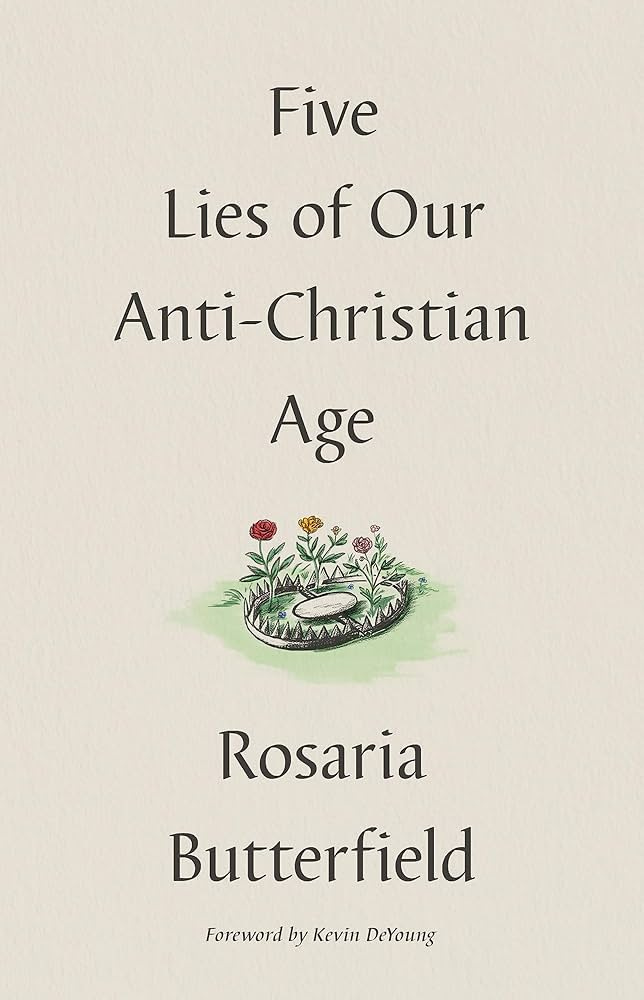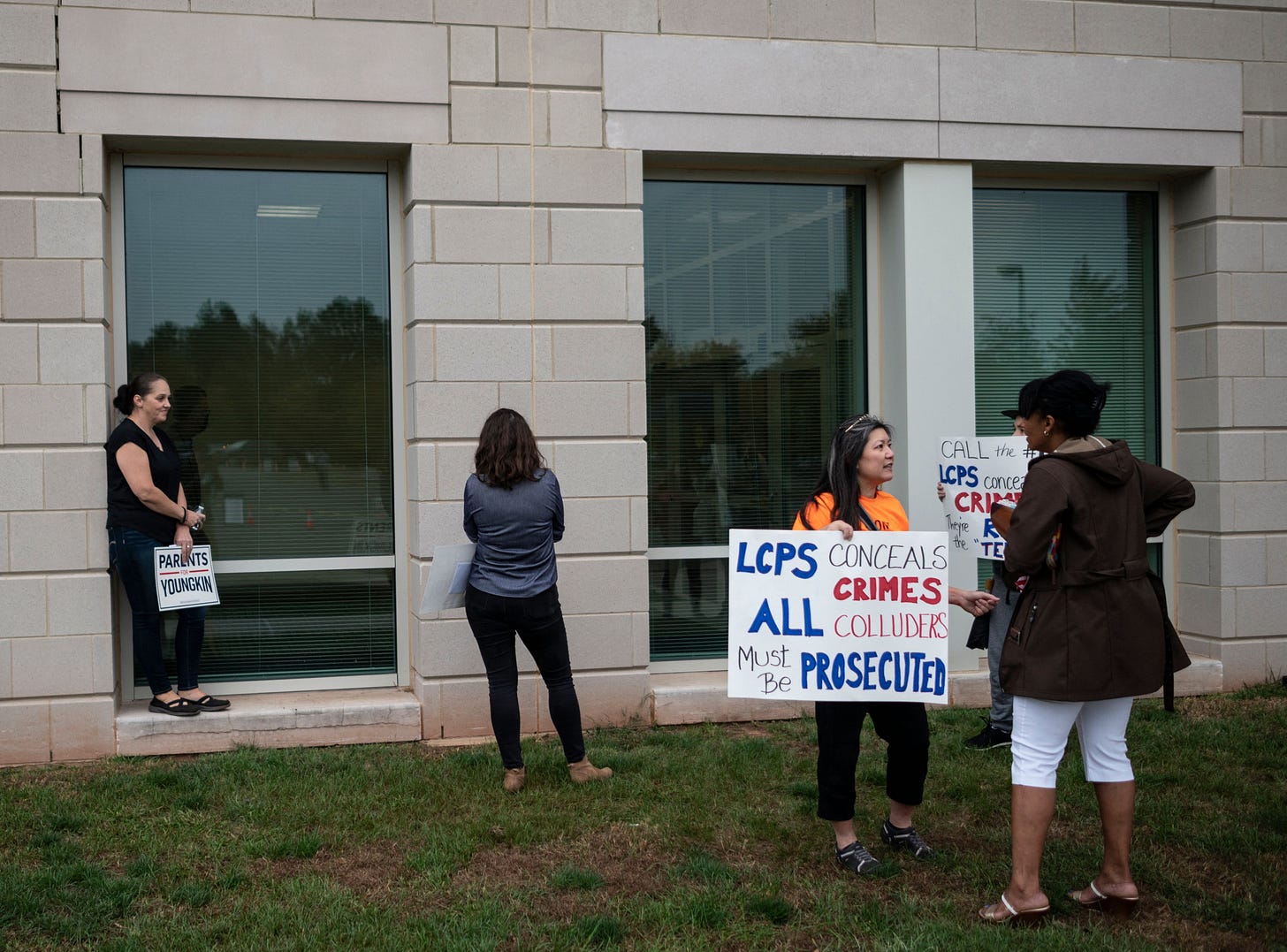My notes on Rosaria Butterfield’s Five Lies of Our Anti-Christian Age were 4000 words long — impossible to find a single point to begin on. I’m inclined to begin dismantling the view that to be a true woman is to be modest and serene above all else. I also want to rage against the book’s encouragement to abuse boundaries and safeguarding measures. I could look at the confused arguments Butterfield fires at the LGBT community, despite her claim to be a former political lesbian and her previous work as an LGBT activist. But, first, let’s start with a positive.
The worldview expressed in Five Lies of Our Anti-Christian Age is deeply disturbing, but here’s one thing I admire: there’s no bullshit. Yes, there are confused arguments which amount to bullshit, but this is because Butterfield is a bad writer. The book reads like a tightly edited stream-of-consciousness and it contradicts itself because Butterfield’s own beliefs do. Five Lies of Our Anti-Christian Age is an unfiltered look into the paranoia of modern evangelicalism.
Modern evangelical churches love to pay lip-service to ‘primary issues’ and ‘secondary issues’. For the uninitiated, ‘primary issues’ are core tenets of the faith (the cross, salvation, the Trinity) which are considered ‘salvation issues’. In other words, your salvation is at risk if you don’t agree with the main stuff. ‘Secondary issues’ are everything else. Butterfield doesn’t bother with party lines. She quotes the author of her foreword, Kevin DeYoung’s, ‘five patterns for grace or condemnation’:
Male leadership (also known, from a biblical perspective, as patriarchy)
Godly women arrayed with heroic characteristics
Godly women helping men
Ungodly women influencing men for evil, while ungodly men abuse women
Women finding meaning, grace, and suffering in bearing and caring for children
As Butterfield presents it, salvation for a woman relies on her remembering her place, not the sacrifice of the cross. What is most striking about the five patterns, however, is the brazenness with which DeYoung promotes the upholding of patriarchy as a primary/salvation issue. What is worse, is DeYoung doesn’t connect the patriarchy with men abusing women. It’s not clear if DeYoung or Butterfield can see abuse beyond physical abuse. If half of the Church is subjugated, surely that is abuse?
What if there is abuse in a marriage? A ‘godly woman’s best defense against an abusive husband’ is church membership at a church ‘where she is in good standing’. The ‘submitted wife’ sometimes needs to call the church elders, higher church authority, or the police when the ‘sin is also a crime, such as sexual abuse’. The mark of a submitted wife is she knows when it is time to do so.
As she begrudgingly acknowledges extreme cases, there are hints that Butterfield is aware of having painted herself into the corner. But as hope of an epiphany arises, Butterfield is already trudging back through the wet paint. Splish claiming that to obey a husband is to hand him over unwillingly to the police. Splash that the church helps women only if they have proven themselves worthy of help. Splosh through the paint ignoring the obvious warnings that the definition of a crime can be psychological or emotional abuse, or that women not be pressured to inform church elders of their abuse.
Secondary issues are resevered for quibbles over infant baptism, for Butterfield, and disagreeing about infant baptism is not the same about disagreeing about murder, fornication or adultery. Butterfield does not stop to explain why women in leadership equates to the church allowing murder. The jury is not out; the jury is dismissed. ‘We destroy arguments, every lofty opinion raised against the knowledge of God, and take every thought captive to obey Christ, being ready to punish every disobedience’, declares the Hon. Judge Butterfield.
It’s strange then, that Butterfield concerns herself with the supposed risk the LGBT community poses to feminism, particuarly the transgender rights movement. To illustrate her point, she references a 2021 case at a high school in Virginia where a fifteen year old male student raped his female classmate while wearing a skirt and, as Butterfield claims, ‘called himself non-binary […] all that we know is that the boy used female pronouns and had a penchant for ruffles’.
This case has been used to argue against trans students using the bathroom of their preferred gender, even though the rapist’s mother and teachers stated that the student used male pronouns and denied that he identified as gender-fluid or non-binary. What the case really revealed was the sad state of girls’ rights to a safe education in Virginia, but not because of any pro-trans policy which existed at the time of the attack. The male student had previously assaulted a girl in a different school, before this case. He was then moved to a third school after the 2021 case where he assaulted another girl.
The Loudoun County public school system may have been motivated to cover up the assault, in-part, so the case would not affect the campaign to allow students to use the bathroom of their choice. But a cis male student committed assault and rape. He was not non-binary, didn’t use female pronouns, nor wore a skirt regularly. No matter. Butterfield does not concern herself with the young girls in this case, scoffing, ‘In public school, aparently, bathrooms are the new brothels where all it takes to bamboozle school administrators is a boy in a skirt’.
Equating the school toilet where a child was raped to a brothel shows the limit of Butterfield’s concern towards girls in education. In fact, Butterfield promotes the unequal treatment of girls in schools through her own Christian homeschool co-op where ‘The boys’ dress code takes up about a paragraph and the girls’ covers multiple pages […] It is very wise and necessary. The fashion industry for girls sets them up to be temptors to young men.’
Butterfield does not want you to have empathy for victims. Butterfield warns that empathy is dangerous. Empathy leads to ‘alienation’ and ‘tribalism’ — we only empathise with perceived victims (not rapists or murderers). But also, ‘if we all stand in someone else's shoes, no one is left standing in a place of objective truth’. Alienation and connection are equal threats to truth.
Butterfield asks her reader to believe that she, who was rasied Catholic, had never read the Bible or heard of the Trinity before converting to Protestant Christianity. She equates the Goethe suicide epidemic to transgenderism (a quick Google search would have told her that the ‘epidemic’ was just unsubstantiated anecdotes). She claims recent peer-reviewed studies have shown that those subjected to conversion therapy were not harmed by it. Does Butterfield care about objective truth?
I think Kevin DeYoung sums up Five Lies of Our Anti-Christian Age when he writes, ‘Don’t follow the great Dragon. That’s what this book is about’. The Dragon’s shadow lingers over every page of Five Lies of Our Anti-Christian Age, filled with paranoia that a Dragon is swooping down to burn the stronghold. The Dragon would be an excellent addition to a ten year-old’s story, but it’s time for Butterfield to face reality:
Dragons are not real.







